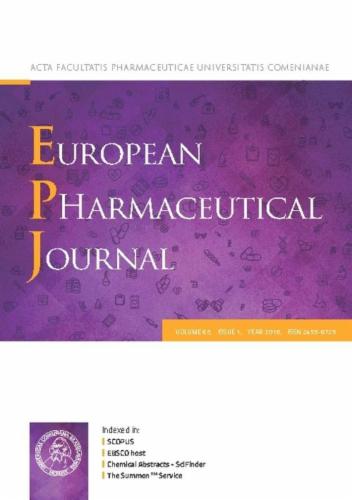个性化儿科用半固体挤压片剂:开发、质量控制和肠内管给药的体外评估。
IF 4.3
3区 医学
Q1 PHARMACOLOGY & PHARMACY
引用次数: 0
摘要
药物复合是一种常见的做法,在儿科用药,由于有限的可用性适当的剂型的儿童。半固体挤压(SSE)作为3D打印的一种方式,在儿科患者的个性化医疗中显示出巨大的潜力。然而,通过3D打印制造片剂是一个缓慢的过程,当儿科需要许多个性化剂量时,可能会成为瓶颈。本研究采用简化的SSE印刷方法制备不同剂量的心得安、螺内酯和泼尼松龙片(n=144片)。质量控制方法包括根据不同药物的理化性质、质量含量均匀性、稳定性和溶出度等指标建立高效液相色谱法。普萘洛尔、螺内酯和泼尼松龙的平均给药准确度分别为93.1%、96.0%和96.7%,质量均匀性较好。各配方均表现出适当的均匀性(AV)本文章由计算机程序翻译,如有差异,请以英文原文为准。

Semi-solid extruded tablets for personalized pediatric use: Development, Quality control and In-Vitro Assessment of Enteral Tube Administration
Drug compounding is a common practice in pediatric medication due to limited availability of appropriate dosage forms for children. Semi-solid extrusion (SSE) as a way of 3D printing has shown a substantial potential in personalized medicine for pediatric patients. However, manufacturing tablets through 3D printing is a slow process and might be a bottleneck when many personalized dosages are needed for pediatric use. Here, we use a simplified SSE printing approach for preparing propranolol, spironolactone, and prednisolone tablets (n = 144 of each) with different dosages. The quality control approach for the tablets included the development of HPLC methods for each drug based on their physicochemical properties and investigation of mass and content uniformity, stability, and dissolution. The average dosing accuracy showed good mass uniformity. All the formulations showed an appropriate homogeneity (AV<15) and stability up to 9 months. Dissolution results of the tablets were in compliance with acceptance criteria (USP) for immediate release dosage forms, i.e., 80% of drug released within 45 min. The osmolality of placebo, propranolol, spironolactone, and prednisolone tablets were 86, 81, 78, and 75 mOsm/kg, respectively. These osmolality values were well below the recommended osmolality of pediatric formulations, i.e., < 450 mOsm/kg. Finally, drug recovery tests via nasogastric tube (NGT) were performed with different reconstitution volumes and temperatures. The drug losses varied between 4–36%. The findings of this study suggest that a simplified SSE printing approach is a promising method for manufacturing personalized medicines and can be used to accurately produce tailor-made dosage forms for pediatric patients.
求助全文
通过发布文献求助,成功后即可免费获取论文全文。
去求助
来源期刊
CiteScore
9.60
自引率
2.20%
发文量
248
审稿时长
50 days
期刊介绍:
The journal publishes research articles, review articles and scientific commentaries on all aspects of the pharmaceutical sciences with emphasis on conceptual novelty and scientific quality. The Editors welcome articles in this multidisciplinary field, with a focus on topics relevant for drug discovery and development.
More specifically, the Journal publishes reports on medicinal chemistry, pharmacology, drug absorption and metabolism, pharmacokinetics and pharmacodynamics, pharmaceutical and biomedical analysis, drug delivery (including gene delivery), drug targeting, pharmaceutical technology, pharmaceutical biotechnology and clinical drug evaluation. The journal will typically not give priority to manuscripts focusing primarily on organic synthesis, natural products, adaptation of analytical approaches, or discussions pertaining to drug policy making.
Scientific commentaries and review articles are generally by invitation only or by consent of the Editors. Proceedings of scientific meetings may be published as special issues or supplements to the Journal.

 求助内容:
求助内容: 应助结果提醒方式:
应助结果提醒方式:


